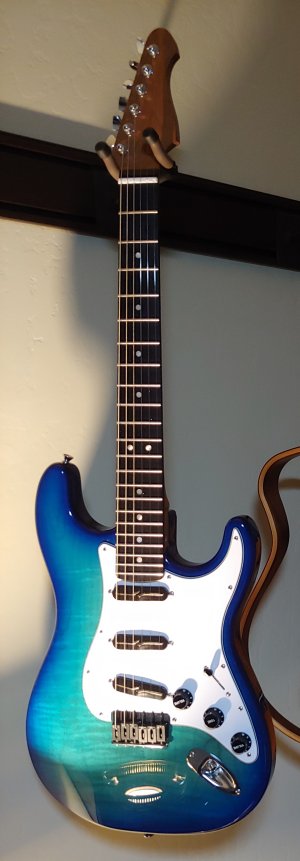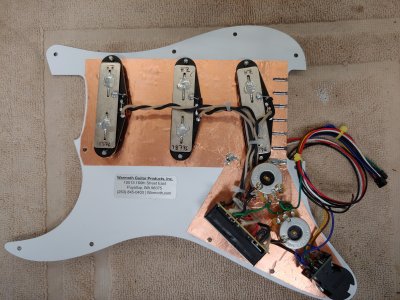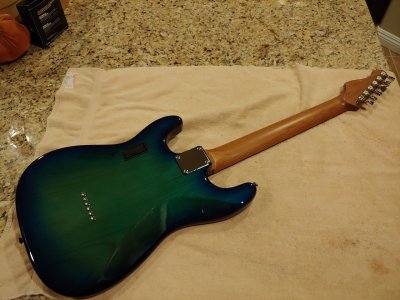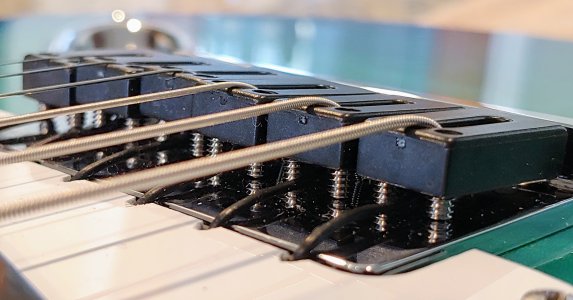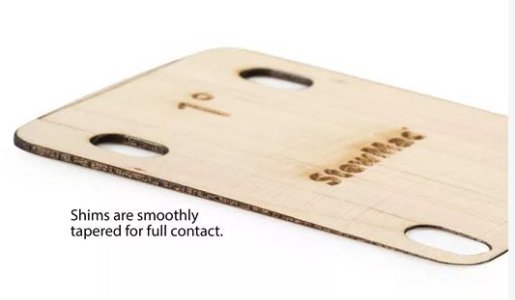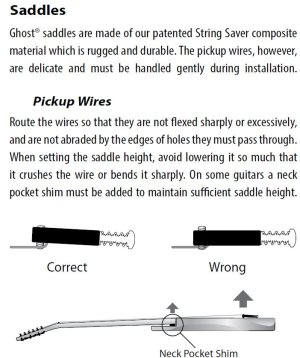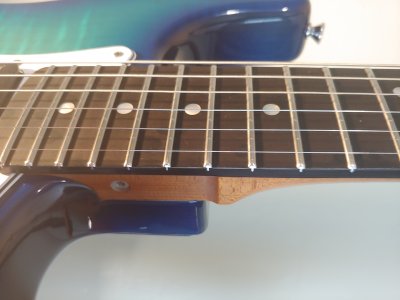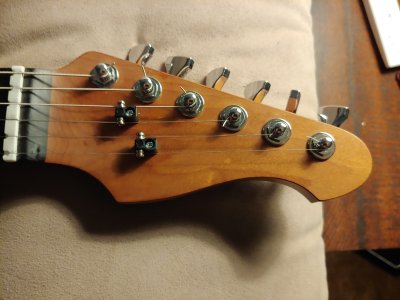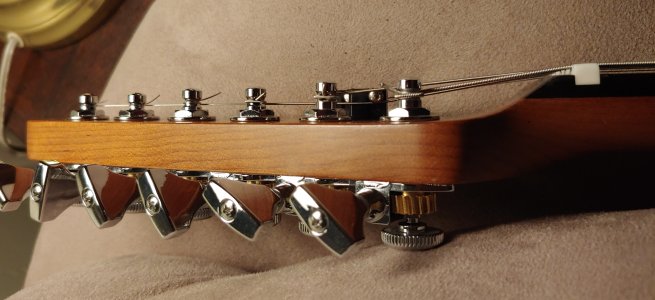cbransfield
Newbie
- Messages
- 15
Greetings!
As a classical guitar player for several decades, I wanted to build something that would:
So here's how the build went together:
All of this was a tight fit in the Warmoth body, and I did need to rout out a small volume for the Ghost preamp. This unit is wired to allow full passive mag pickup bypass, or blending both mags and piezos to the active preamp output using separate volume controls. I can also use a stereo output cable and split the mags and piezos between two amps.
Initial test results are promising! From the mags, I'm hearing several versions of "chime" and "quack" tones that I don't remember from back in the day. I've got the pickups set fairly low to avoid the "magnetic pinch" detuning problem.
The Ghost piezo system does a really nice job of rendering the high frequencies and mechanical sounds which the mags naturally filter out. Graphtech provided a warning that their preamp isn't always happy with a shielded control cavity, but this one is doing fine (painted cavity and copper pickguard shield).
I'll let the neck simmer for several months before final adjustment and dressing out. The satin nitro finish on the neck gives it that "played-in" feel already. The Ghost piezo saddles are very smooth and comfortable under the heel of my hand.
So far so good!
Craig
PS: If someone can tell me how to insert my images in-line with the text, as I do in other BBS systems, I would certainly appreciate it!
As a classical guitar player for several decades, I wanted to build something that would:
- Ease my ergonomic re-adaptation to the electric guitar
- Provide maximum tonal flexibility
- Resolve several issues I remember from playing my pre-CBS Fender hard-tail strat back in the day
So here's how the build went together:
- Chambered (for weight reduction) body with flame maple top
- Roasted maple super-wide neck with 16" straight radius, ebony fingerboard, SS frets, and Graphtech Earvana compensated nut
- Hipshot locking tuners with staggered post heights (hopefully no string tree required?)
- Vintage Strat hard-tail bridge plate with Graphtech Ghost piezo saddles and preamp
- Lindy Fralin split-blade humbucking pickups (vintage Strat wound)
- NSF Free-Way 10-position selector switch for the mag pickups.
All of this was a tight fit in the Warmoth body, and I did need to rout out a small volume for the Ghost preamp. This unit is wired to allow full passive mag pickup bypass, or blending both mags and piezos to the active preamp output using separate volume controls. I can also use a stereo output cable and split the mags and piezos between two amps.
Initial test results are promising! From the mags, I'm hearing several versions of "chime" and "quack" tones that I don't remember from back in the day. I've got the pickups set fairly low to avoid the "magnetic pinch" detuning problem.
The Ghost piezo system does a really nice job of rendering the high frequencies and mechanical sounds which the mags naturally filter out. Graphtech provided a warning that their preamp isn't always happy with a shielded control cavity, but this one is doing fine (painted cavity and copper pickguard shield).
I'll let the neck simmer for several months before final adjustment and dressing out. The satin nitro finish on the neck gives it that "played-in" feel already. The Ghost piezo saddles are very smooth and comfortable under the heel of my hand.
So far so good!
Craig
PS: If someone can tell me how to insert my images in-line with the text, as I do in other BBS systems, I would certainly appreciate it!



